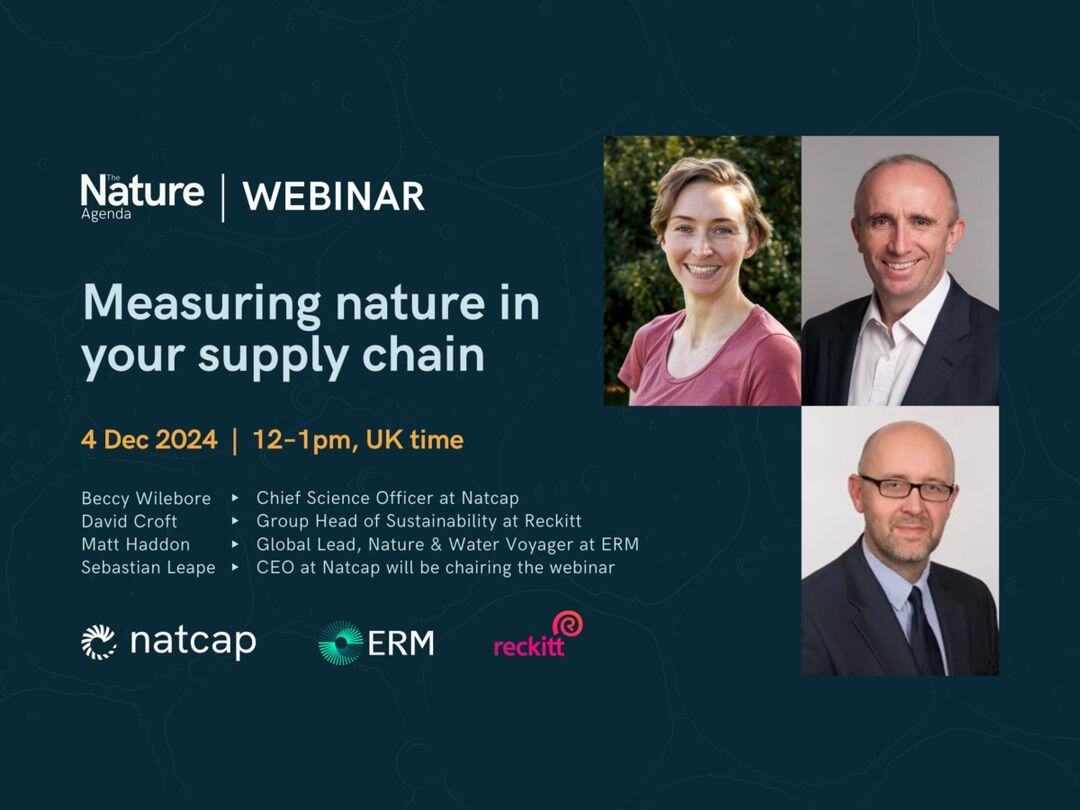Bringing Climate and Nature Together: What Integration Means in Practice
The climate crisis has long been a corporate priority. But the nature agenda, biodiversity, land use, pollution, and water, is now emerging as an...
2 min read
 Marc Kennedy
:
19 May, 2025
Marc Kennedy
:
19 May, 2025

In today’s fast-evolving sustainability landscape, companies are under increasing pressure to understand and manage their relationship with nature. But how do they begin to navigate this complex space? The answer lies in identifying the right data and metrics to make informed, strategic decisions about a company’s impacts and dependencies on nature. However, not all data serves the same purpose. The key is knowing which metrics help answer which questions.
Below are some practical examples of how businesses can transform nature data into actionable intelligence.
Question: “I know nothing about nature impacts. Where should I start?”
Action: Identify initial areas of nature-related work
Data/Metric: Qualitative scoring tools (e.g., ENCORE)
For companies just beginning their nature journey, tools like ENCORE offer a qualitative overview of how business sectors depend on and impact natural capital. This helps teams pinpoint high-priority areas for further exploration.
Question: “How do my direct operations likely impact nature?”
Action: Identify material topics and refine areas of future work
Data/Metric: Impact driver data combined with global datasets – e.g., m³ of water use in areas of water stress, hectares of forest cover change in high BII areas
Quantifying nature impacts at the operational level requires linking company activities with external datasets. For example, pairing water use with water stress maps can highlight risks in water-scarce regions. Similarly, forest cover loss data helps flag biodiversity-sensitive areas.
Question: “What supply chain locations should I be concerned about?”
Action: Engage with suppliers to identify actual sourcing locations and impacts
Data/Metrics: Global commodity production data (e.g., CROPGRIDS), nature condition indicators (e.g., water stress, FLII)
Nature risks don’t stop at the company’s fence line. By combining commodity sourcing data with global nature condition layers, companies can spot hotspots where biodiversity or water stress may present future challenges, or reputational risks.
Question: “What is a safe level of impact in my direct operations?”
Action: Set site-specific environmental targets
Metric/Data: Ecological surveys, groundwater table assessments
Determining a “safe” level of impact depends on understanding local ecosystem thresholds. On-the-ground data like groundwater table depth or species presence provides the granular insight needed to set meaningful targets.
Question: “How can I track progress against supply chain commitments?”
Action: Influence supplier practices
Metric/Data: Satellite land cover data
Remote sensing technologies such as satellite imagery are powerful tools for monitoring landscape changes over time. Companies can use these datasets to verify supplier practices and assess whether commitments, like no-deforestation pledges, are being upheld.
Nature metrics aren’t just for reporting, they’re for action. By asking the right questions and choosing the right data, businesses can move from reactive risk management to proactive strategy. Turning nature data to nature intelligence empowers companies to lead with purpose and contribute to a truly nature-positive future.

The climate crisis has long been a corporate priority. But the nature agenda, biodiversity, land use, pollution, and water, is now emerging as an...
.jpg)
Why ‘Nature’ is on the Investor Agenda Now Sustainability reporting frameworks are multiplying - CSRD, ISSB, TNFD, SBTN, GRI - but investors are...

The supply chain is where most nature-related risks and opportunities lie, yet it remains one of the most challenging areas for businesses to measure...